When nurturing a thriving Jamun tree, choosing the best fertilizer is paramount. This guide will delve into organic and natural fertilizers, including homemade options, and explore the ideal NPK (Nitrogen, Phosphorus, Potassium) ratio for your Jamun tree’s needs. Additionally, we’ll provide insights into when and how to apply these fertilizers for maximum effectiveness. Join us on this horticultural journey to ensure your Jamun tree flourishes to its full potential.
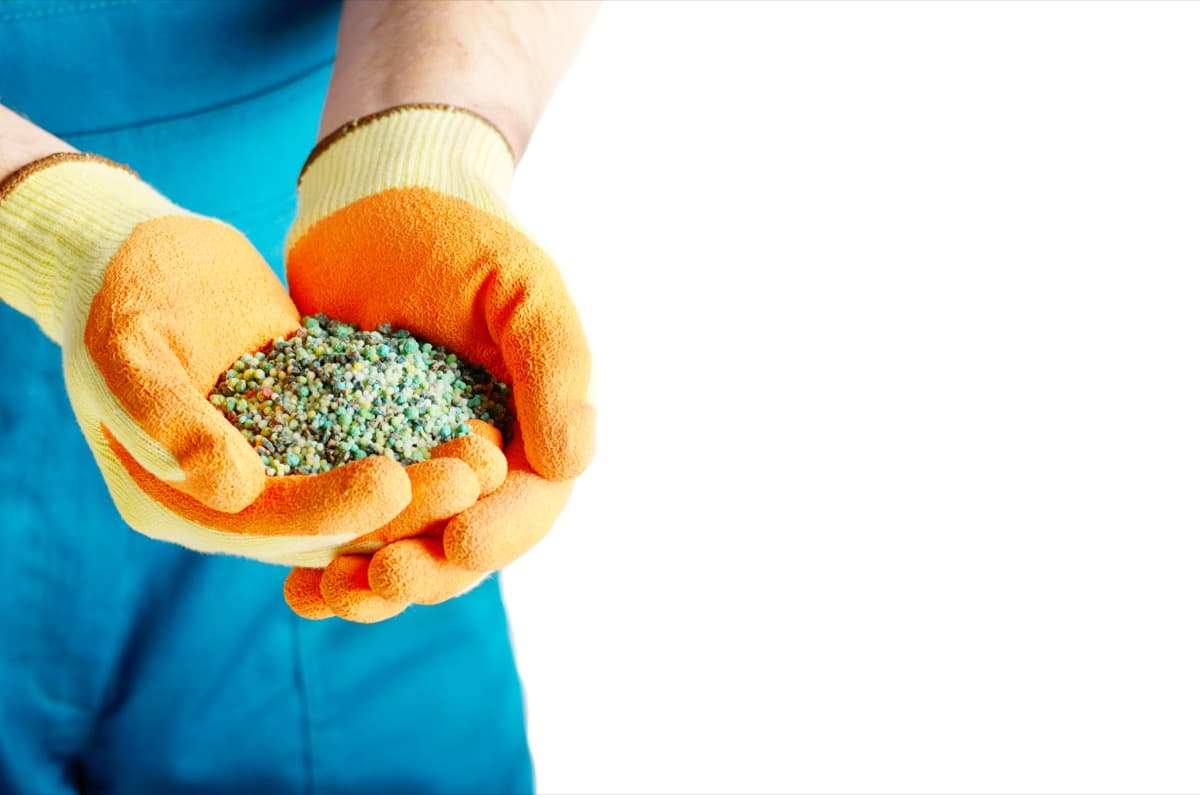
Best Fertilizer Jamun Tree
Understanding the Nutritional Needs of Jamun Trees
Jamun trees, or Indian blackberry or Java plum, require specific nutrients for growth and fruit production. Nitrogen is crucial for foliage development, while Phosphorus promotes root development, flowering, and fruiting. Potassium is essential for fruit quality and disease resistance, especially during the fruiting stage.
Micronutrients like iron, zinc, and manganese are necessary for physiological processes. Secondary macronutrients like calcium and magnesium are crucial for cell structure and photosynthesis. Jamun trees thrive in slightly acidic to neutral soil with pH levels between 6 and 7. Understanding these needs is crucial for successful cultivation.
Organic Fertilizers: A Sustainable Choice for Jamun Trees
Organic fertilization offers an eco-friendly and sustainable solution to meet the nutritional requirements of Jamun trees while reducing the negative environmental impacts associated with inorganic fertilizers. This method aims to enhance soil fertility, boost plant nutrition, and ensure the productivity of these fruit-bearing trees.
In case you missed it: Key Rules to Start Jamunapari Goat Farming: Requirements and Business Plan
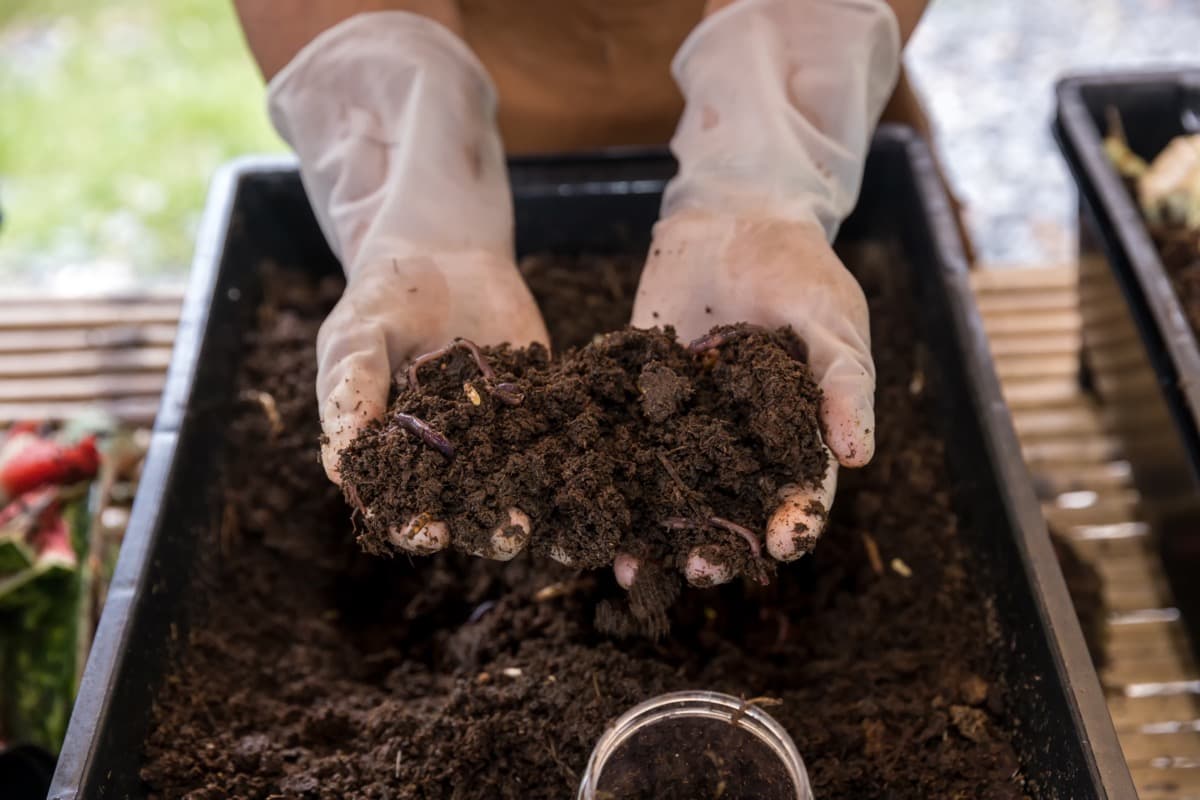
Benefits of Organic Fertilization for Jamun Trees
- Improved Soil Health: Organic fertilizers enhance soil organic matter, microbial activity, and physical properties, promoting overall soil health.
- Sustainability: Organic fertilization reduces the need for excessive inorganic fertilizers, mitigating soil and water pollution and decreasing greenhouse gas emissions.
- Nutrient Availability: It increases soil nutrient availability, improving plant nutrition and fruit quality.
- Microbial Diversity: Organic fertilization fosters beneficial soil microorganisms, protecting against pathogenic fungi and enhancing root health.
- Fruit Quality: Organic fertilizers have been linked to improved fruit quality, including increased antioxidant properties and better taste.
- Economic Viability: While organic fertilization may have higher upfront costs, it can result in higher-quality produce, potentially commanding better market prices.
Drawbacks of Organic Fertilization for Jamun Trees
- Slow Nutrient Release: Organic fertilizers release nutrients slowly, which may not meet the immediate nitrogen needs of Jamun trees.
- Availability and Supply: Finding sufficient quantities of organic fertilizers can be challenging, especially in regions without mixed farming systems.
- Toxicity Risks: High application rates of certain organic materials, like olive mill wastewater, can pose toxicity risks due to polyphenols, heavy metals, and other factors.
- Economic Costs: Organic fertilization can be more expensive initially, impacting the economic viability of some farms.
Fertilizer Application for Mature Jamun Trees
Organic Fertilizer: Before the fruit-bearing phase, applying approximately 19 kg of Farm Yard Manure (FYM) annually per tree during the pre-beating period is advisable. FYM provides essential organic matter to the soil, improving its structure and nutrient-holding capacity. This organic input enriches the soil and fosters beneficial soil microorganisms.
Inorganic Fertilizers: For mature, fruit-bearing Jamun trees, nutrient requirements differ. The recommended annual application per tree includes 500 kg of Nitrogen (N), 600 grams of Phosphorus (P), and 300 grams of Potassium (K). Nitrogen promotes foliage growth and tree vigor, while Phosphorus supports root development and flowering. Potassium plays a pivotal role in fruit quality and disease resistance.
Soil Condition: It’s crucial to monitor soil conditions and tree behavior. Jamun trees may exhibit excessive vegetative growth on nutrient-rich soils, potentially delaying fruiting. In such cases, it’s advisable to withhold manure and fertilizer applications temporarily. Additionally, irrigation should be reduced or withheld during specific periods, namely September-October and February-March.
This strategic withholding of irrigation and nutrients helps induce fruit bud formation, blossom development, and effective fruit setting. Research indicates that a balanced nutrient supply, particularly NPK (Nitrogen, Phosphorus, Potassium), is essential for optimal fruit production in Jamun trees. These nutrients influence various physiological processes, from vegetative growth to flowering and fruiting.
In case you missed it: Best Fertilizer for Indian Gooseberry/Amla: Organic, Homemade, NPK Ratio, When and How to Apply
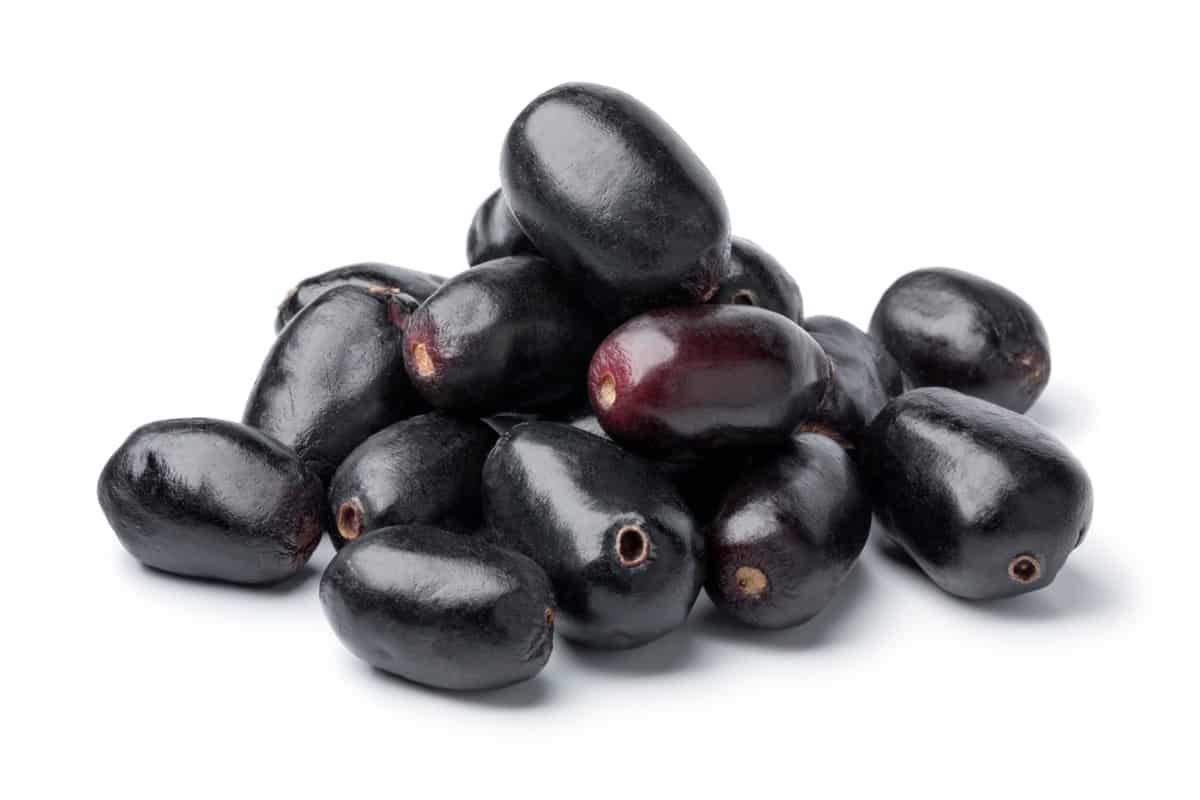
Homemade Fertilizer Recipes for Jamun Trees
Homemade fertilizers can be an economical and sustainable way to nourish Jamun trees. One effective recipe involves composting kitchen scraps and plant materials. Collect kitchen waste like fruit and vegetable peels, eggshells, and coffee grounds. Combine this with dried leaves and grass clippings from your yard.
Layer these materials in a compost bin, ensuring a good mix of greens (nitrogen-rich) and browns (carbon-rich). Turn the pile regularly to aid decomposition. In a few months, you’ll have nutrient-rich compost to feed your Jamun tree. Compost provides a balanced blend of essential nutrients and improves soil structure.
Deciphering the Ideal NPK Ratio for Jamun Tree Health
Balanced NPK Ratio: For mature Jamun trees, the ideal NPK (Nitrogen, Phosphorus, Potassium) ratio is crucial for tree health and fruit production. It’s recommended to apply 500 kg of Nitrogen (N), 600 grams of Phosphorus (P), and 300 grams of Potassium (K) per tree per year. This balanced nutrient supply ensures proper vegetative growth, root development, flowering, and fruit quality.
Managing Rich Soils: On exceptionally nutrient-rich soils, Jamun trees may exhibit excessive vegetative growth at the expense of fruiting. To counteract this, refrain from adding additional manure and reduce irrigation during September-October and February-March. This controlled water and nutrient withholding promotes fruit bud formation, blossom development, and effective fruit setting.
Utilizing Jamun Leaf Litter: The leaf litter that accumulates beneath the Jamun tree canopy can be harnessed for soil fertility management. Implement in situ vermiculture in basins to facilitate the decomposition of this biomass. Vermiculture enriches the soil with valuable organic matter and nutrients.
Mulching for Weed Control and Moisture Retention: To further enhance soil quality and conserve moisture, consider mulching. Use materials like black polythene or organic matter such as rice husk and straw. Mulching serves a dual purpose: reducing weed competition, which can be detrimental to Jamun trees, and retaining soil moisture, especially in arid regions.
Scientific Basis: These recommendations are grounded in scientific principles of orchard management and nutrient balance. Providing the appropriate NPK ratio tailored to the tree’s needs and managing soil fertility through practices like vermiculture and mulchJamun trees’ contribute to the overall reality of Jamun trees.
Seasonal Timing: When to Fertilize Your Jamun Tree
Avoid Manuring: In cases where the soil is already nutrient-rich, it’s advisable to avoid adding additional manure. Excessive nutrients can stimulate vigorous vegetative growth at the expense of fruiting. Instead, focus on maintaining a balanced nutrient profile in the soil without overloading it with additional fertilizers.
In case you missed it: Best Fertilizer for Bitter Gourd: Organic, Natural, Homemade, NPK Ratio, When and How to Apply
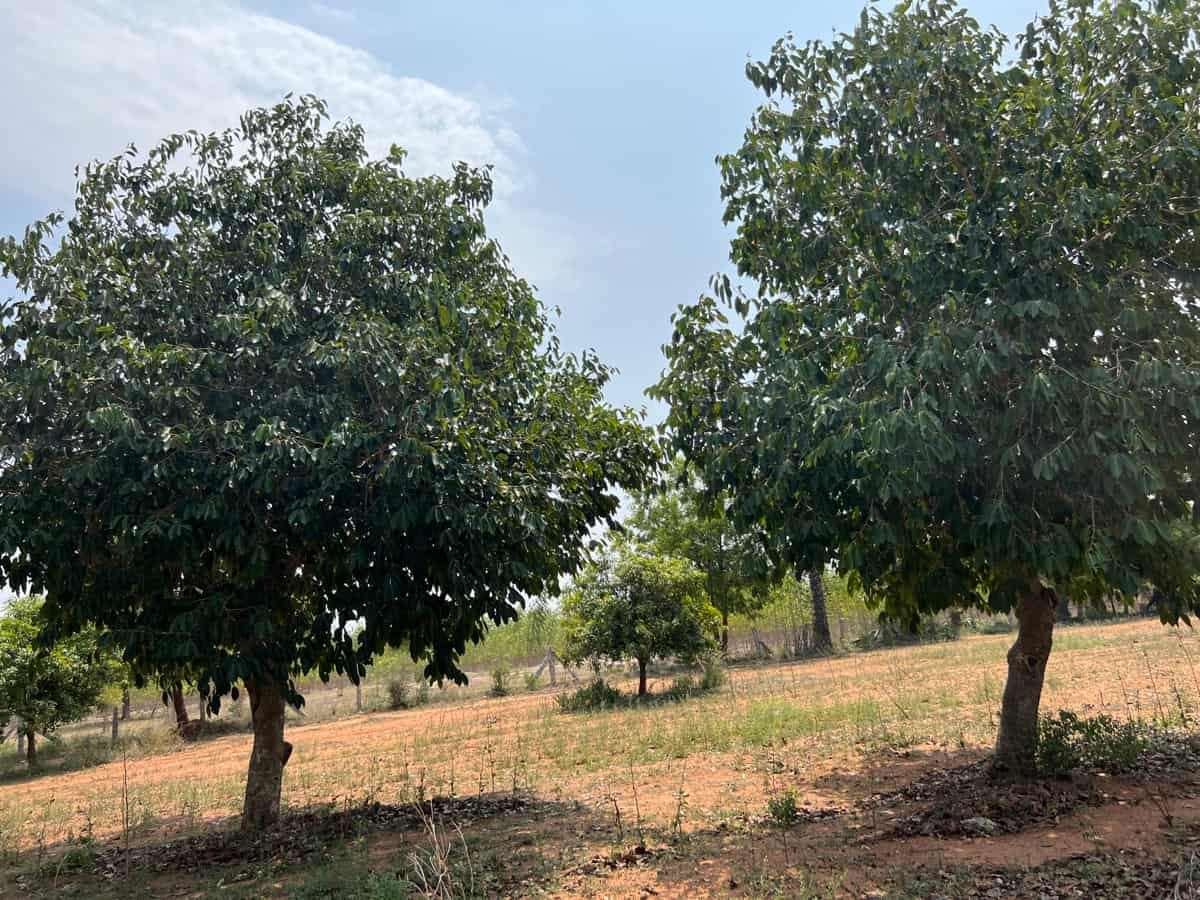
Sparingly Irrigate: To further promote the desired fruiting response, adjust your irrigation practices. During the critical months of September-October and February-March, when fruit bud formation, blossoming, and fruit setting are crucial stages, reduce the frequency and amount of irrigation. Controlled water withholding at these times helps redirect the tree’s energy toward reproductive processes.
These recommendations align with the scientific principles of orchard management. They recognize that nutrient-rich soils can lead to excessive vegetative growth, which may delay or reduce fruit production.
Best Practices for Applying Fertilizers to Jamun Trees
Propagation: Jamun trees can be propagated through both seed and vegetative methods. Seed propagation is common due to polyembryony, ensuring true-to-parent characteristics. However, it results in delayed bearing. Fresh seeds are sown, and germination occurs in 10 to 15 days. Seedlings are ready to transplant in spring (February to March) or during the monsoon (August to September). Air layering with 500 ppm IBA in lanolin paste is successful in spring. Rooting through cuttings is better under intermittent mist.
Planting: Jamun trees can be planted in both spring (February-March) and the monsoon season (July-August). Monsoon planting is preferred, as trees planted in February-March often face hot and dry conditions in May and June, leading to mortality. Before planting, clear and plow the field. Dig 1 x 1 x 1 m pits at 10 m intervals, filling them with 75% topsoil and 25% well-rotted farmyard manure or compost.
Fertilizer Application: Apply approximately 19 kg FYM during the pre-bearing period for young trees. Mature, bearing trees require 75 kg of FYM per tree. On rich soils, excessive vegetative growth can delay fruiting. In such cases, avoid manure and fertilizer and reduce irrigation in September-October and February-March to promote fruit bud formation, blossoming, and fruit setting. Grown-up trees should receive 500 kg N, 600g P, and 300g K per plant annually.
Irrigation: Irrigate immediately after manuring. Young plants need 6-8 irrigations for optimal growth. For bearing trees, provide irrigation from September to October to facilitate fruit bud formation and from May to June to support fruit development. Typically, 5-6 irrigations are required.
Harvesting: Flowering occurs from March to April, and fruits ripen from June to July or with the onset of rain. The ripening process takes 3-5 months from full bloom. Fruits change from green to deep red or bluish-black when ripe. Jamun is a non-climacteric fruit, meaning it does not ripen after harvesting. Growing budded trees yield around 50-70 kg per plant annually, while seedling trees yield 80-100 kg annually.
Maintaining a Thriving Jamun Orchard: Expert Tips
- Soil Management: Conduct regular soil tests to determine nutrient levels and pH. Maintain soil pH between 6.0 and 7.0 for optimal growth. Use organic matter like well-rotted farmyard manure to improve soil fertility.
- Fertilization: Apply fertilizers based on soil test results. 500 kg N, 600g P, and 300g K per plant per year are recommended for established trees. Adjust nutrient levels to prevent excessive vegetative growth.
- Irrigation: Young trees require 6-8 irrigations annually, with focused watering during key growth periods. Mature trees benefit from irrigation in September-October and May-June. Ensure proper drainage to prevent waterlogged soil.
- Pruning: Regularly prune to remove dead or diseased branches and maintain the desired canopy shape. Pruning should be done during the dormant season to minimize stress on the tree.
- Pest and Disease Control: Monitor for common pests like fruit flies and anthracnose. Use integrated pest management strategies and biological controls to minimize chemical pesticide use.
- Mulching: Apply mulch around the tree’s base to conserve moisture, reduce weed competition, and improve soil structure. Organic mulches like rice husk and straw are effective.
- Harvesting: Harvest fruits at the proper ripeness stage. Fully ripe Jamun fruits change from green to deep red or bluish-black. Handle fruits gently to prevent damage.
- Prune After Harvest: Prune after fruiting to remove excess vegetative growth and encourage fruit bud formation for the next season.
In case you missed it: Benefits of DAP Fertilizer: Price, Composition, How and When to Apply
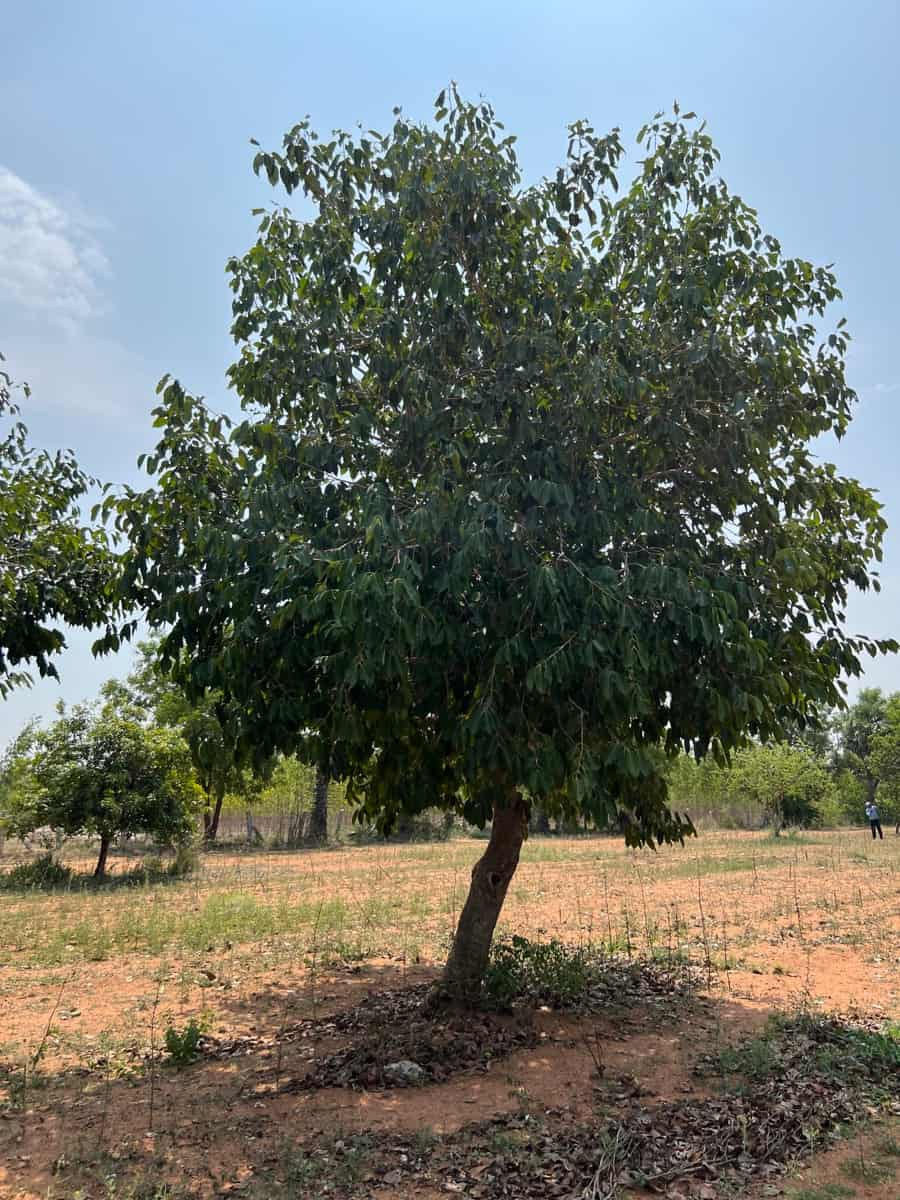
What is the Recommended NPK ratio for Fruit-bearing Jamun Trees?
For fruit-bearing Jamun trees, the recommended NPK (Nitrogen, Phosphorus, Potassium) ratio is approximately 500 kg of Nitrogen (N), 600 grams of Phosphorus (P), and 300 grams of Potassium (K) per plant per year. This balanced nutrient ratio supports healthy fruit production while avoiding excessive vegetative growth.
Nitrogen promotes tree vigor and foliage development, while Phosphorus aids in root and fruit development. Potassium plays a crucial role in fruit quality and resistance to diseases. Maintaining this NPK ratio is essential for optimal fruit yield and quality in Jamun trees.
Should I Fertilize my Jamun Tree During the Monsoon Season?
Fertilizing Jamun trees during the monsoon season should be approached with caution. Avoiding heavy fertilization during this period is advisable, especially if your soil is naturally rich. The reason is that excessive rainfall can lead to nutrient leaching, potentially wasting fertilizers and causing environmental concerns. Instead, focusing on pre-monsoon or post-monsoon fertilization is often more beneficial to support fruit bud formation, blossoming, and fruit setting.
Can Over-fertilization Harm Jamun Trees?
Yes, over-fertilization can harm Jamun trees. When excessive fertilizers, especially nitrogen-rich ones, are applied, the tree may put on excessive vegetative growth at the expense of fruiting. This can lead to delayed or reduced fruit production. Moreover, over-fertilization can negatively impact the tree’s health and make it more vulnerable to disease.
What are the Signs of Nutrient Deficiency in Jamun Trees?
Nutrient deficiency in Jamun trees can be identified through various signs, including macronutrient deficiencies such as nitrogen, Phosphorus, potassium, iron, zinc, and manganese, and micronutrient deficiencies like iron, zinc, and manganese. These deficiencies can lead to yellowing of older leaves, reduced growth, poor fruiting, reduced leaf size, distortion, and poor fruit set. Regular monitoring and appropriate fertilization are crucial for maintaining the health and productivity of Jamun trees.
In case you missed it: Turmeric Fertilizer Requirements and Recommendations: How And When to Apply
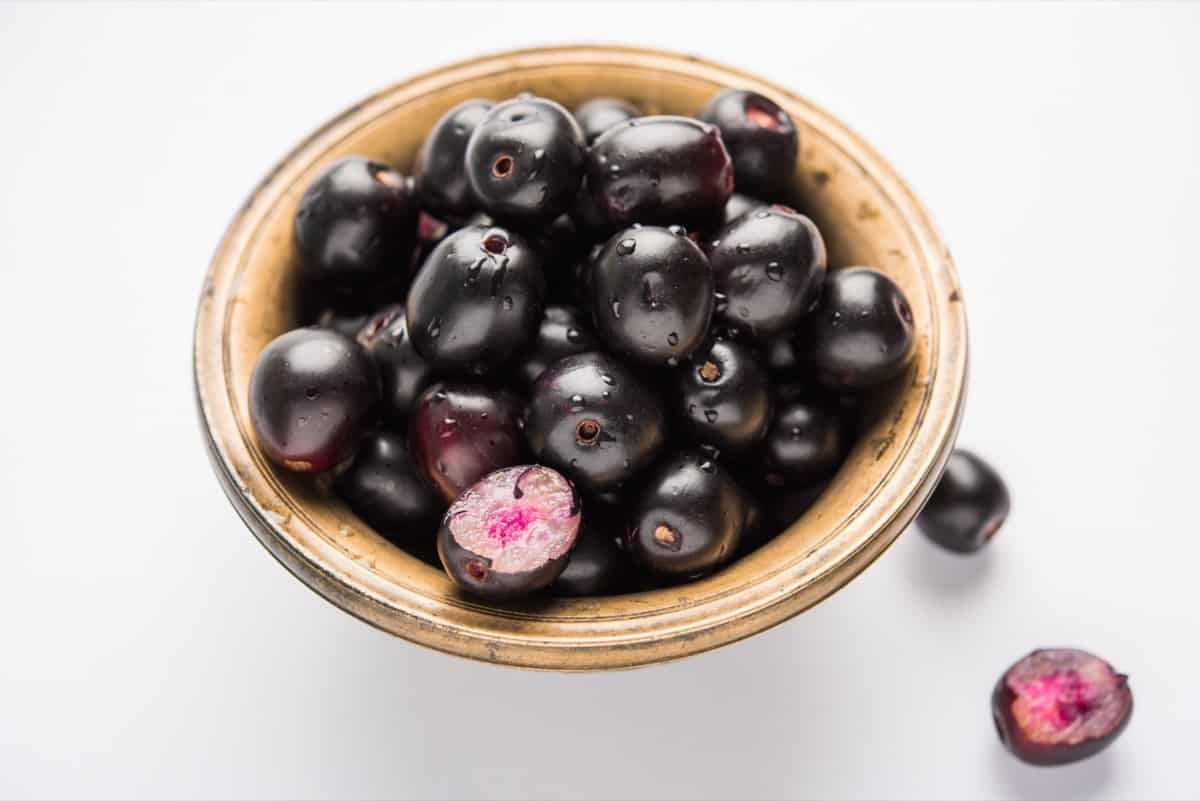
Conclusion
The best fertilizer for Jamun trees should consider organic, natural, and homemade options. The ideal NPK ratio depends on soil conditions. Fertilizing during the monsoon, avoiding over-fertilization, and addressing nutrient deficiencies are key for Jamun tree health and fruitful yields.
- Types of Pesticides Used in Agriculture: A Beginner’s Guide
- Economical Aquaculture: A Guide to Low-Budget Fish Farming
- 15 Common Planting Errors That Can Doom Your Fruit Trees
- How to Make Houseplants Bushy: Effective Tips and Ideas
- Innovative Strategies for Boosting Coconut Pollination and Yield
- Pollination Strategies for Maximum Pumpkin Yield
- The Complete Guide to Chicken Fattening: Strategies for Maximum Growth
- Natural Solutions for Tulip Problems: 100% Effective Remedies for Leaf and Bulb-Related Issues
- Revolutionizing Citrus Preservation: Towards a Healthier, Greener Future
- Natural Solutions for Peony Leaf and Flower Problems: 100% Effective Remedies
- Maximizing Profits with Avocado Contract Farming in India: A Comprehensive Guide
- Natural Solutions for Hydrangea Problems: 100% Effective Remedies for Leaf and Flowers
- The Ultimate Guide to Choosing the Perfect Foliage Friend: Bringing Life Indoors
- From Sunlight to Sustainability: 15 Ways to Use Solar Technology in Agriculture
- The Ultimate Guide to Dong Tao Chicken: Exploring from History to Raising
- The Eco-Friendly Makeover: How to Convert Your Unused Swimming Pool into a Fish Pond
- Mastering the Art of Delaware Chicken Farming: Essentials for Healthy Backyard Flocks
- 20 Best Homemade Fertilizers for Money Plant: DIY Recipes and Application Methods
- How to Craft a Comprehensive Free-Range Chicken Farming Business Plan
- Brighten Your Flock: Raising Easter Egger Chickens for Beauty and Bounty
- How to Optimize Your Poultry Egg Farm Business Plan with These Strategies
- Subsidy for Spirulina Cultivation: How Indian Government Schemes Encouraging Spirulina Farmers
- Ultimate Guide to Raising Dominique Chickens: Breeding, Feeding, Egg-Production, and Care
- Mastering the Art of Raising Jersey Giant Chickens: Care, Feeding, and More
- Ultimate Guide to Raising Legbar Chickens: Breeding, Farming Practices, Diet, Egg-Production
- How to Raise Welsummer Chickens: A Comprehensive Guide for Beginners
- How to Protect Indoor Plants in Winter: A Comprehensive Guide
- Ultimate Guide to Grow Bag Gardening: Tips, Tricks, and Planting Ideas for Urban Gardeners
- Guide to Lotus Cultivation: How to Propagate, Plant, Grow, Care, Cost, and Profit
- Agriculture Drone Subsidy Scheme: Government Kisan Subsidy, License, and How to Apply Online
- Ultimate Guide to Raising Araucana Chickens: Breed Profile, Farming Economics, Diet, and Care
- Bringing Hydroponics to Classroom: Importance, Benefits of Learning for School Students
- Ultimate Guide to Raising Polish Chickens: Breed Profile, Farming Economics, Diet, and Care
- Ultimate Guide to Raising Australorp Chickens: Profile, Farming Economics, Egg Production, Diet, and Care
- Silkie Chicken Farming: Raising Practices, Varieties, Egg Production, Diet, and Care
- Sussex Chicken Farming: Raising Practices, Varieties, Egg Production, Diet and Care